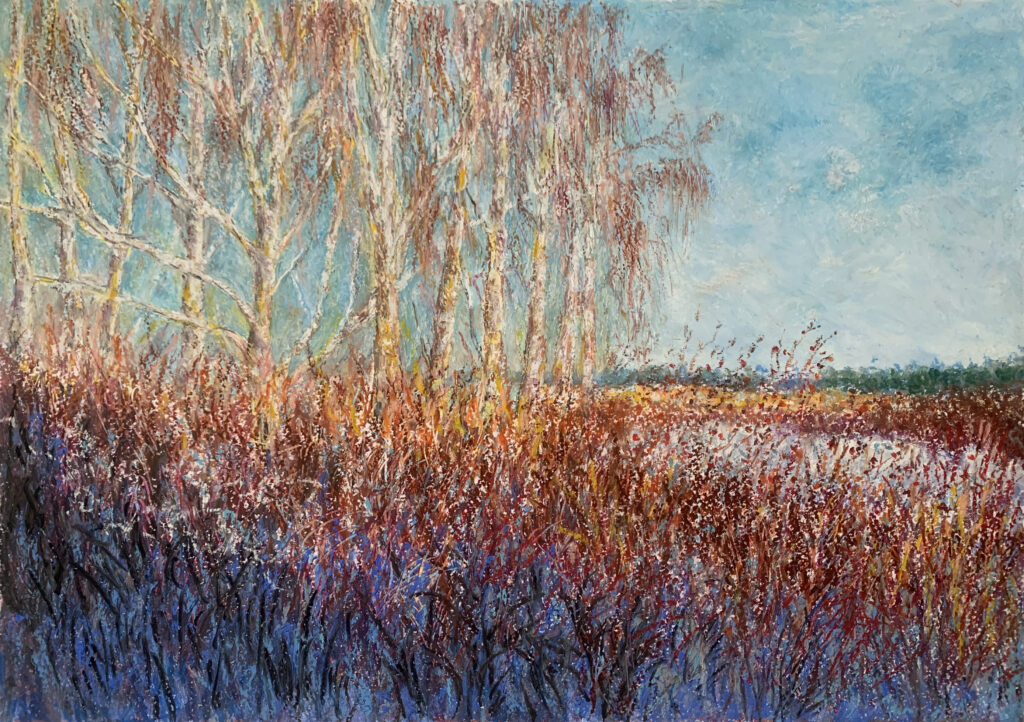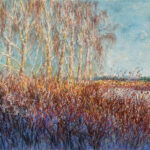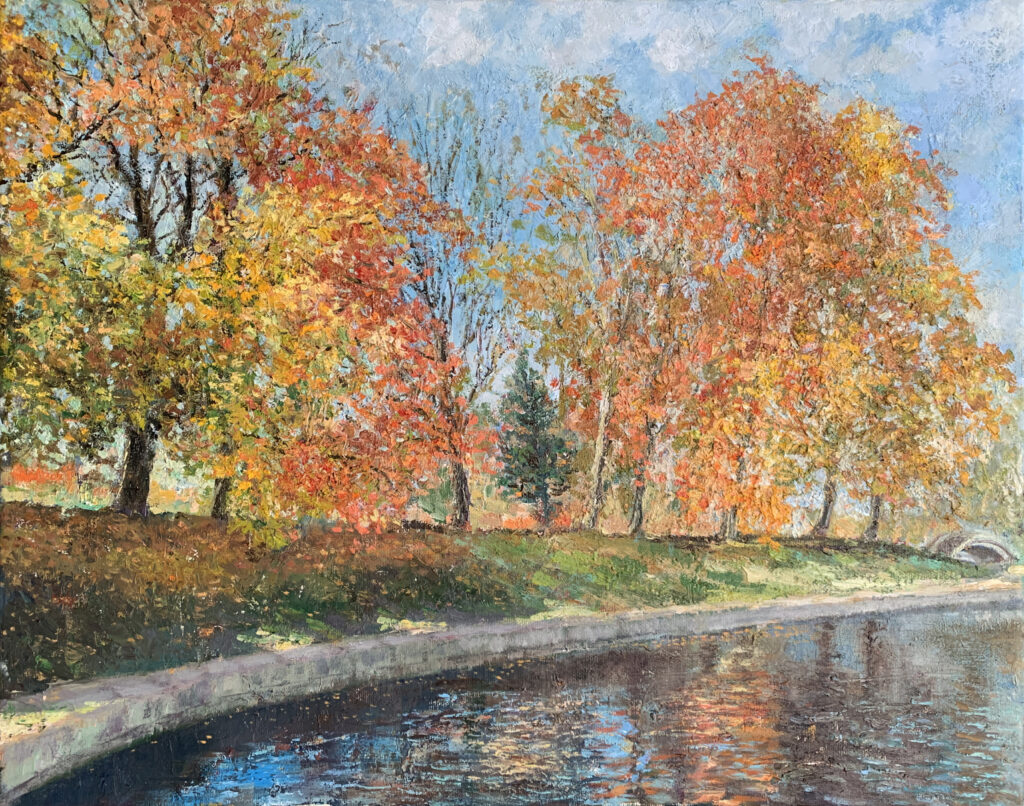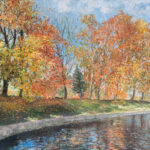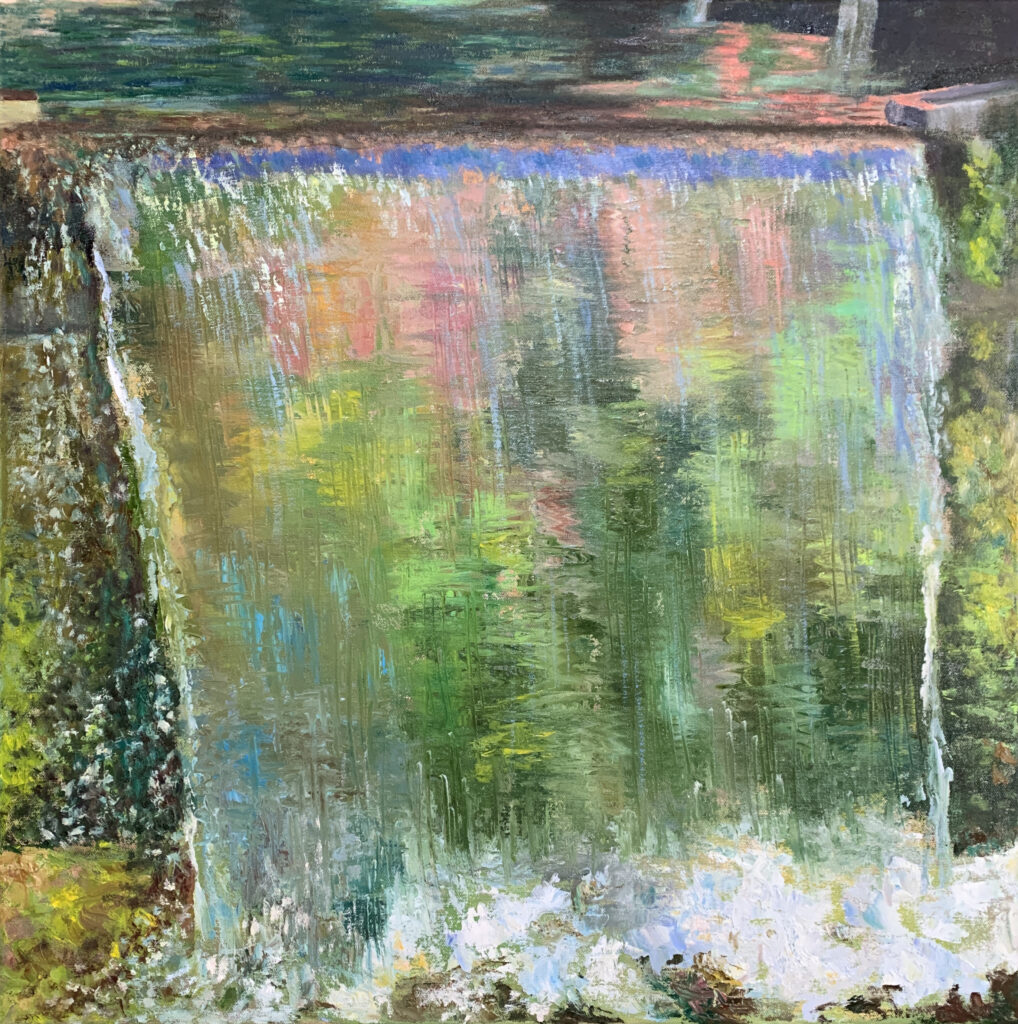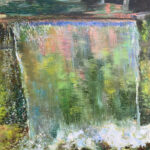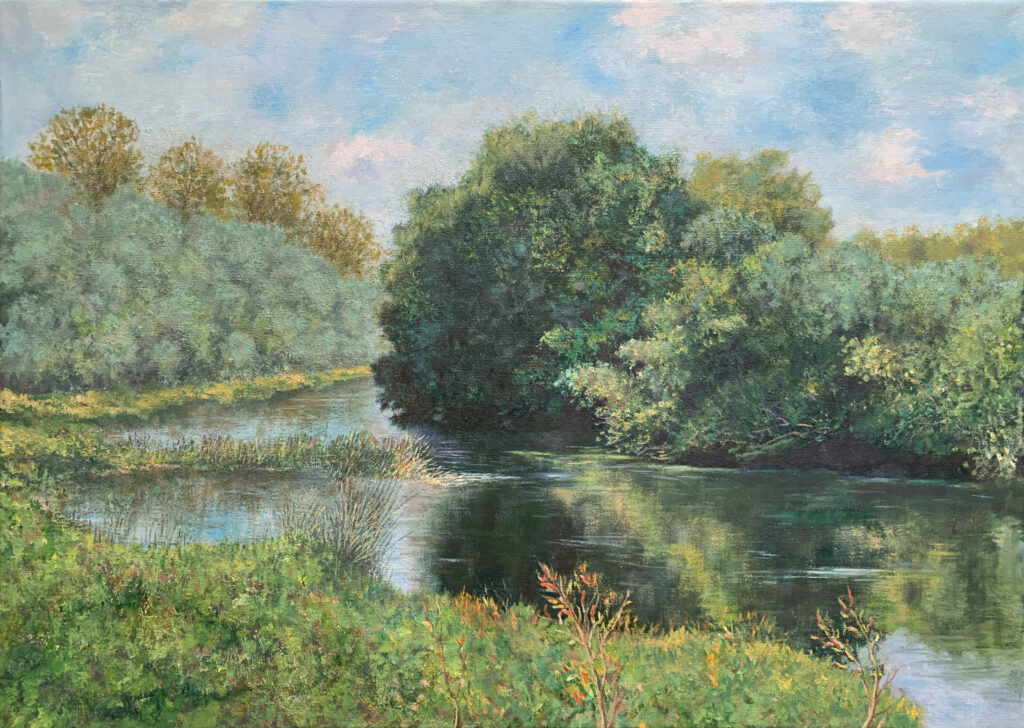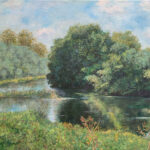One of the most celebrated artists of the New Hope School, Daniel Garber received his initial artistic training at the Art Academy of Cincinnati and later at the Pennsylvania Academy of the Fine Arts, studying under William Merritt Chase and Cecilia Beaux. The most significant influence during Garber’s early career, however, was his study in Europe from 1903 to 1905. “[Garber], during a year of study in Paris, was influenced by the European Impressionists. From this exposure to these masters, Garber honed his skill at representing sunlight and derived his use of lively pastel colors.”
Daniel Garber (American, 1880-1958)
Uplands, November
oil on canvas, 71.8 x 76.8 cm.
Painted in 1939.
Private collection

Garber was not only influenced by the style, but also the practice of the European plein air artists. For the remainder of his career, he was insistent on completing his works out of doors, rather than making quick sketches of his subject and returning to his studio to compose his final canvas. This routine further cultivated his intimate understanding of light and atmosphere. “Garber’s dedication to outdoor study from the motif became the foundation of his method…Because he liked to work directly, without preparatory drawings, Garber needed the constant presence of the motif during most of the execution of the painting.”
Upon his return from Europe, Garber began a fifty-four year teaching career, the majority of which was spent at the Pennsylvania Academy of the Fine Arts. “Garber’s consummate skills as a teacher, as well as his fabulously successful career as a painter, made him the most prominent defender of the artistic tradition in a school that had built its reputation largely as a bastion of that tradition.” His continual dissemination of his knowledge of technique and theories on light and atmosphere influenced an entire generation of artists and he became one of the integral members of the New Hope School. “Daniel Garber was the revered teacher and master artist who kept the colony grounded in the highest standards of the European and American artistic traditions.” The blend of Impressionist tonality and atmosphere with American Realism taught by Garber and present in all his works, manifested the driving principle of the New Hope School.
Uplands, November is a prime example of Garber’s skill in capturing the luminous effect of light on atmosphere and landscape. He masterfully achieves a tapestry effect by layering varied colors of fall foliage and farmland in precise and intricate designs of interwoven brushstrokes. Kathleen A. Foster writes, “The stichlike texture and large, two-dimensional patterns in Garber’s landscapes… led from these tapestry similes into a discussion of his ‘decorative’ qualities. From the 1880s, when the terminology first came into vogue, decorativeness had been a desirable quality in all the arts and a powerful word of praise, lacking the implications of superficiality that it carries today…For Garber, the term seems to have been called forth partly by his effects of color and texture. More important, his personal compositional style created strong two-dimensional patterns, usually resulting from the use of a few favored effects…Garber counseled [sic] his students to see the landscape in planes like ‘curtains,’ and this is exactly the ‘decorative’ effect his paintings produced.”
Uplands, November manifests Garber’s mature style and demonstrates that “Garber’s idealizing sensibility always coexisted with his realist approach, and the unique effects produced by his balance of the two impulses…This search for the restful and the beautiful within the ‘plain facts’ of his own life motivated all of Garber’s best work, and transformed his homeliest subjects into something serene and golden.”


